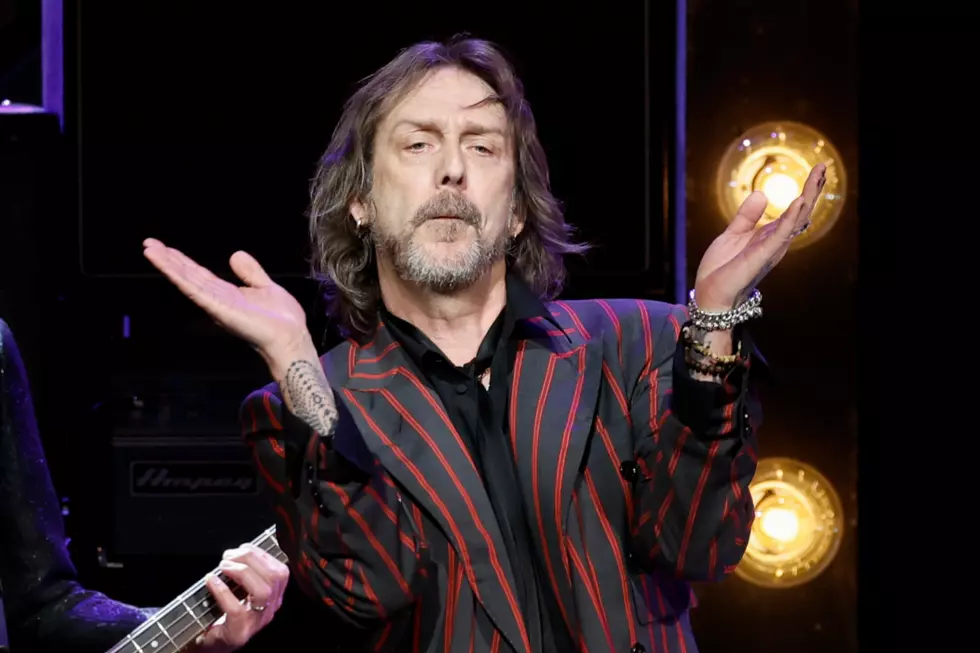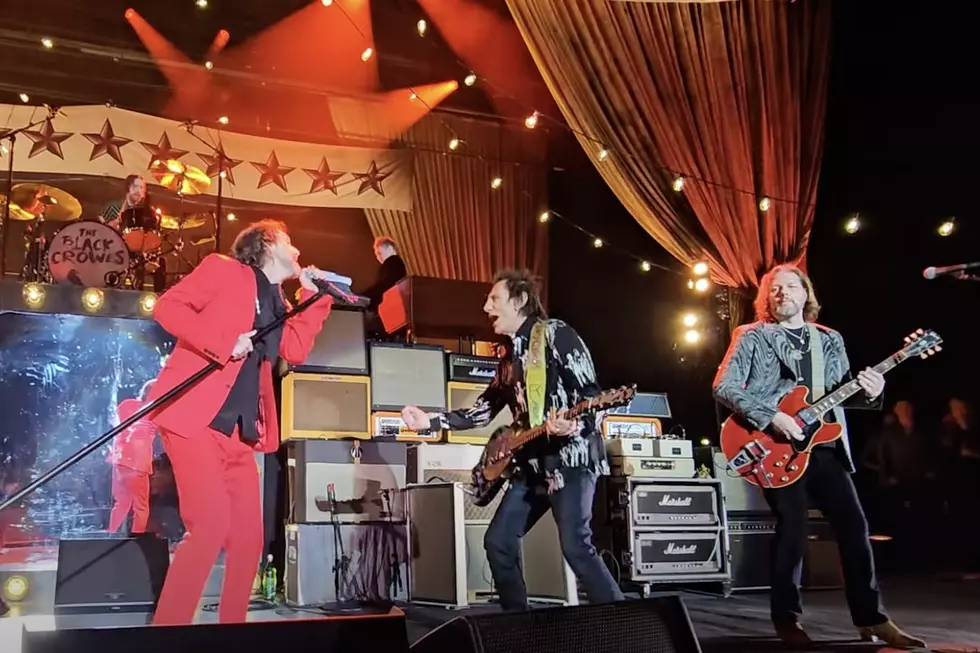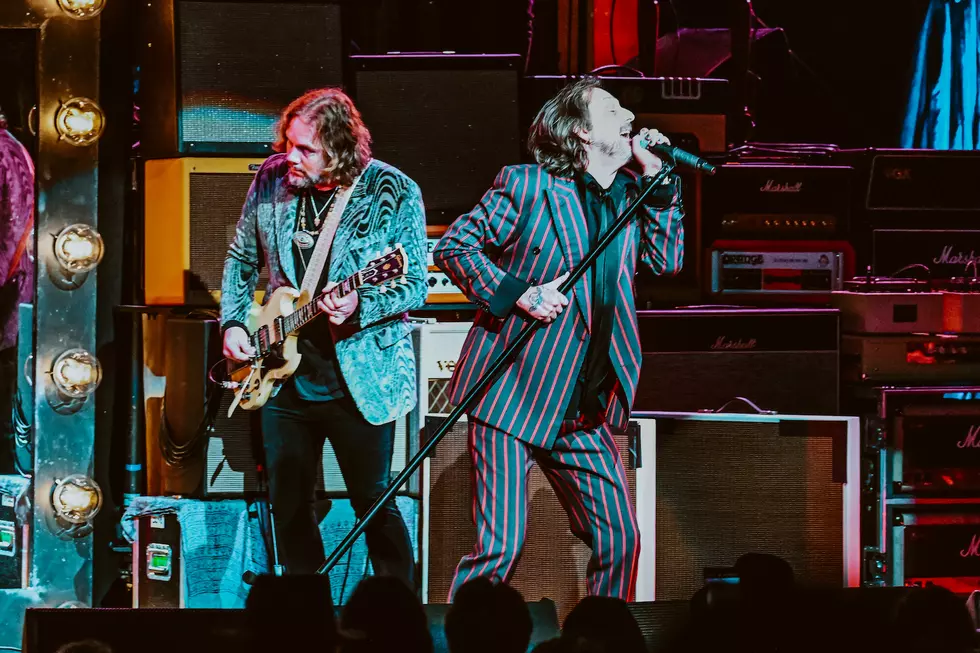
Rich Robinson on New Album, Significant Black Crowes Songs + More
Continuing his decade-long solo career, the Black Crowes founding member and guitarist Rich Robinson is set to release 'The Ceaseless Sight' on June 3 via the End Records. Expertly blending folk, soul and rock 'n' roll, 'The Ceaseless Sight' elevates Robinson's solo music to a whole different level. An album that feels like one long story rather than 12 individual tracks, listeners will find familiar and new sounds that make this record experience a memorable one.
Taking a moment out of his busy schedule leading up to the album's release, Robinson chats with us about what it was like recording his third studio album, his personal appreciation for vinyl and even dives into some of his most indelible Crowes tunes.
Do you feel different about your approach to this record than you did with your first solo release 10 years ago?
Yeah, I definitely do. When I started, I had all these songs and I was putting together bands and just going down the same path as before. It just fell in my lap that either I have to do this on my own or not do it, you know what I mean? So I started just writing lyrics and started singing, and over time I got much more comfortable with this. My first record, 'Paper,' I really loved, but there was a difficulty to it that was new, and it was a huge learning experience for me. Then the Crowes got back together and I went on tour for a long time and started singing more. That whole tour for ‘Paper,’ I was out there singing and learning about my voice. So when I was back out with the Crowes, I was singing more and by the time I made ‘Through a Crooked Sun,’ I felt much more comfortable and had much more of an understanding of how to write for my voice.
Doing that tour in 2011 and 2012, again it taught me a tremendous amount. By the time I went in the studio to make this record, I had all of that history to bring with me. Everything is a learning process. Everything that I’ve been doing for 25 years has been that way, so it’s always cool to go through all of these experiences that kind of build my way of seeing things or hearing things or creating things.
What does your band look like today?
In the studio, it was just me and Joe [Magistro] and Marco Benevento, who plays keyboard. Joe plays drums and I play bass and guitar and other stuff. We just went in and did it. Basically, Joe and I make the records, the two of us. We’ll go in and lay all the tracks down, and then I’ll overdub the bass and whatever else I’ll do and Joe will do percussion. This time around, I had heard about Marco and luckily he was in town and wanted to come down. He killed it and was just playing the coolest s-- in the world. He’s such a great talent. For him to be able to just come in like that and put down what he did was phenomenal. I always like to write with just me and drums, and then kind of add everything around that.
You recorded this in Woodstock, right?
Yeah, at the same studio I’ve been working at for the last few years, Applehead. It’s a great place to work and full of great people. [Owners and operators] Chris Bittner and Mike Birnbaum are great guys.
Woodstock is such a powerful area and creates a special feeling in its visitors. I'm sure it's easy to feel inspired.
I started going up there around 2006, when I was living in the city. My girlfriend at the time and I would just go up there and hang out. We really liked it. As the Crowes started making more records, we made ‘Warpaint’ up there and we did ‘Before the Frost’ there. I just started spending a lot of time up there and really liked it. Like you said, it just has this strong feeling. I got comfortable working up there and I always feel like I hit a pace that works for me. There’s just so many musicians around, too, that are these great musicians. It’s really low-key and a beautiful, great place to be.
The album cover for 'The Ceaseless Sight' is more than just a photograph. It has art on top of the photo, creating a bit of a surreal landscape. What's the story behind the cover?
Layers. It’s something simple that has a lot more to it than you see, and I’ve always been into that musically or with artwork or whatever it may be. I always appreciate that. A friend of mine who is a photographer [Laurent Chanez] and I went to upstate New York and took some photos and had this concept of adding cool illustrations to it. It just kind of fell into place.
Are those your illustrations?
A friend of ours named Marq Spusta, we sent it to him and sent some rough ideas. He tried it and came up with this really cool, really beautiful idea.
And blown up on a 12-inch jacket, it looks even cooler and more beautiful.
Exactly. Absolutely.
With 'The Ceaseless Sight,' you're releasing an amazing vinyl edition that includes two records pressed on gorgeous splatter wax. What does vinyl mean to you personally?
To me, it’s becoming more and more important again. It’s not convenient, necessarily. When things aren’t convenient, I think you respect them more. If something becomes easy and you can just throw it away, then it took no effort to really go out and get it. So if you walk into a store and you hear a song and you have your iPhone or whatever and you put on Shazam or some app that recognizes what the song is, then you purchase it and listen to it. It just kind of goes into this weird digital netherworld with 10,000 other songs on your phone. There’s no artwork, there’s nothing striking. It’s an interesting concept that it turns into that.
But if you buy an album, there’s a physicality to it. You hold it, there’s a textural feeling, there’s a smell to it, there’s an actual process to it. You stand up, you walk over, you put the album on the turntable, you put the needle down and then you listen. The side is short, which means you have to listen and stay in the general area because you know that the needle is going to run out. That process enhances your experience of listening to music. It makes it a far deeper experience and gives it a new meaning of what it’s like to listen. No matter how many technical advances we get, don’t forget that vinyl still sounds the best. It’s still an analog waveform that covers a whole spectrum. It’s not little stairs. You can make more and more and more tiny little stairs that kind of emulate it, but on a basic level, your ear can really hear the difference. All of those elements are what add to the vinyl experience.
The 12 tracks featured on the record are fantastic and they all seem to be seamless, as they each lead into the next. How much music didn't make the cut for the final album?
You know, I made an EP, too. I have a four-song EP plus the album, plus about two or three songs that I wasn’t able to finish. I think there was a good portion of it used. I like the thought of making the record and also making an accompanying EP. It’s a little touch into something else. On the last record, I made ‘Llama Blues,’ I went into a tiny room with just drums and one mic and my amp. There was literally just one mic between the two of us. It was this old RCA mic that was perfectly placed and that was how we made the whole EP.
On this new one, I wanted some really cool instrumental music. I was able to put that together and tie it together with the last song on the album which is just an instrumental. The EP is just a continuation of that. Sometimes I’ll go in and have 16 or 17 songs, sometimes I’ll have 12 or 13, but I just think whatever is meant to be is meant to be. The record, the sequencing, what fits where, that is kind of a lost art. You can change the sequence of a record and it would turn into a completely different record. One song can take it somewhere else. Adding one song or taking it away can shift the journey, so to speak. I always write the songs and then let the songs dictate what the record is going to be.
How does this album fit into your history with the Crowes?
Everything is like a tree. If you just look at a tree, there’s this trunk and these off-shoots that still reach and touch and some look different and some face a different direction, but they’re all connected to the same main part of what I do or what I did. I don’t draw any distinction between what I do with the Crowes, or me producing or writing for other people, or making my own records. It’s all part of this work.
When I go back and listen to your early stuff with the Crowes, I'm always amazed at how powerful the guitar arrangements are, and even more amazed at how young you were when you put them together. Looking back on your vast career, is there one guitar piece that stands out to you and just makes you say, "Wow"?
There’s not one. There’s always one of those per album, there’s always a song or two per record that I use as a platform to write the whole record. For instance, at the end of the ‘Shake Your Money Maker’ tour, I was thinking about writing the next record. One of the first songs that came to where I knew this is a really great direction was ‘Thorn in My Pride.’ When I wrote ‘Thorn in My Pride,’ we were playing it in a rough form at the end of the ‘Shake Your Money Maker’ tour. That was one that I really liked as soon as I wrote it. It was one of those songs that was a springboard for the rest of the record.
And then on ‘Amorica,’ I had ‘Nonfiction.’ There was really something about that that held some weight. ‘Nonfiction’ and ‘Wiser Time,’ those two together really held something that let me build around them. Also, by the way, ‘Sometimes Salvation’ on ‘The Southern Harmony and Musical Companion.’ And so on down the line with ‘Three Snakes and One Charm,’ it was ‘Under a Mountain.’ I started that record writing ‘Under a Mountain.’ And then it goes on and on. There’s always been something that comes to me that inspires me, something I can contextualize and build around it. Another one I like is ‘Soul Singing,’ as soon as I wrote that I knew it was something cool and something I could work with.
And as a fan, I can't not ask: What does the future of the Black Crowes look like?
I don’t know. I have no idea. We have no plans to do anything for a long time. I have no idea what’s going to happen.
More From Ultimate Classic Rock









